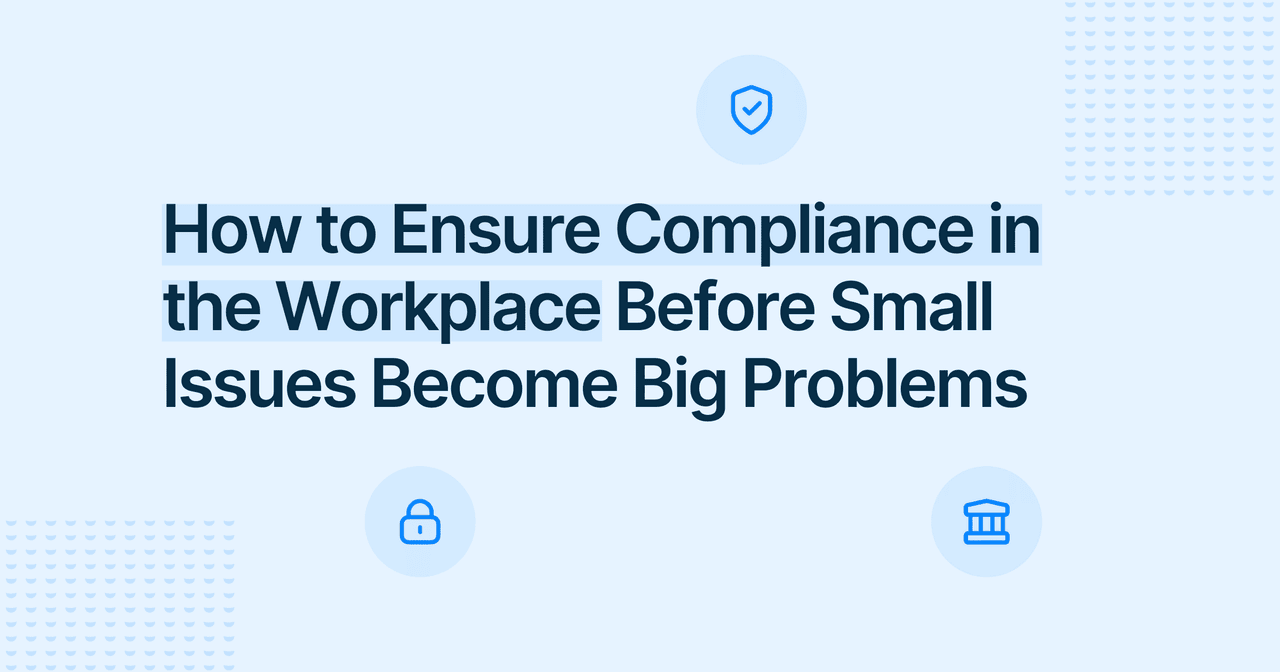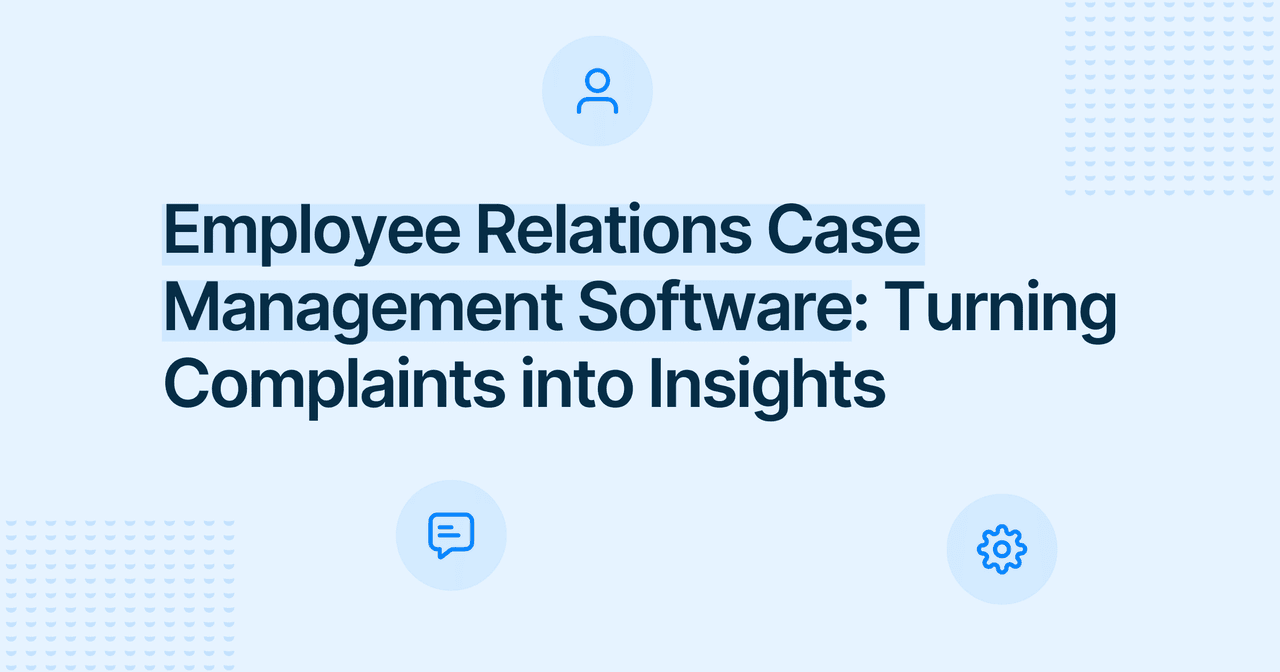




Legal & Compliance

Alaa El-Shaarawi
Copywriter and Content Manager
Published
2025-10-15
Reading time
8 min


Table of contents
Subscribe to our newsletter
In 2023, former Detroit Tigers scouts Gary Pellant and Randall Johnson claimed they were pushed out in favor of younger colleagues after the team embraced analytics-driven hiring. On paper, the decision may have looked like a routine business choice.
In practice, it raises a critical question. When does a policy cross the line from neutral to employment discrimination?
This is the difference between disparate treatment and disparate impact: two concepts that often get confused but can have very real consequences for employers and their compliance with federal law.
Employment law can feel like a tightrope walk. Every hiring decision, promotion, or performance evaluation exists under scrutiny, and even well-intentioned policies can create legal and cultural risks.
For HR professionals, compliance officers, legal advisors, DEI leaders, and senior managers, understanding how intent and effect shape workplace outcomes is essential for preventing unfair treatment and avoiding liability.

Disparate treatment happens when someone is treated less favorably because of who they are: race, gender identity, sexual orientation, age, religion, disability, or national origin. It’s the “you were treated this way because of that” kind of intentional discrimination.
The hardest part isn’t recognizing that something unfair happened, but proving that it was intentional. Intent often hides in plain sight, showing up in decision-making patterns, everyday behavior, or internal communications. These traces, emails, comments, or the inconsistent application of policies, are what reveal motive.
Spotting them takes awareness, documentation, and vigilance. When organizations understand how disparate treatment works, they can hold managers accountable and prevent arbitrary or biased decisions before they turn into serious legal or cultural problems.
Even subtle inconsistencies can create liability. When one manager overlooks performance issues for some employees but disciplines others for the same behavior, that’s still disparate treatment.
Disparate impact is trickier to spot. It happens when policies that seem fair on paper end up disproportionately affecting certain groups in practice. Unlike disparate treatment, intent isn’t the problem here. It’s the outcome.
A rule might look neutral, but its effect can quietly exclude people based on protected characteristics, creating barriers that undermine both fairness and compliance. That’s why organizations need to go beyond good intentions.
Detecting disparate impact means looking at patterns: who benefits and who’s left out. It’s not just about what’s written in a policy, but about what happens once it’s applied. By recognizing these imbalances, companies can refine their processes to stay fair while still meeting legitimate business goals.
In these situations, plaintiffs only need to show the adverse effect. The burden of proof then shifts to the employer to demonstrate the policy is job-related and consistent with business necessity.
Detecting disparate impact requires a close review of hiring, promotion, and disciplinary practices. Even well-meaning employment policies can unintentionally create an adverse impact for a protected group, making regular audits and monitoring of all employment actions critical.
For practical strategies on identifying and addressing hidden risks, check out workplace discrimination prevention.
Platforms like FaceUp make this easier by giving employees a secure, anonymous way to flag potential issues early, helping organizations correct problems before they escalate into formal legal claims.
Understanding the difference between disparate treatment and disparate impact, under Title VII of the Civil Rights Act of 1964, helps organizations prevent harm, protect employees, and reduce costly legal and reputational risks.
Misclassifying outcomes can lead to ineffective interventions, regulatory scrutiny, or morale problems. Leaders need to understand not just whether discrimination happened, but how it happened: was it intentional, or was it an unintended consequence of a neutral policy?
Without this understanding, organizations risk:
Disparate treatment claims rely on overt evidence of disparate treatment, while disparate impact claims rely on discriminatory effect. Confusing intent and effect can have serious consequences.
Ignoring either type of discrimination exposes your organization to lawsuits, regulatory penalties, reputational harm, and low employee morale.
Legal theory becomes real when you see how these principles play out in the workplace. Recent cases show that discrimination isn’t always about intent; sometimes, it’s about the unseen consequences of policies that appear neutral.
In Hayman v. Mastercard (2025), the company agreed to pay $26 million to settle claims that it systematically underpaid women and employees of color compared to white male colleagues. Plaintiffs alleged that Mastercard assigned underrepresented employees to lower-paying roles, gave smaller raises, and offered fewer promotions — all signs of intentional bias rather than coincidence.
The case led to new internal audits, fair pay reviews, and policy adjustments designed to make sure managers apply consistent criteria for advancement. It’s a clear reminder that disparate treatment often leaves a trail: in decisions, documentation, and patterns of inequality that can’t be ignored.
In 2024, Patriot Bank reached a $1.9 million settlement with the U.S. Department of Justice over claims that its lending practices disproportionately excluded Black and Hispanic communities in Memphis, Tennessee. The issue wasn’t overt intent but the effect of the bank’s policies: fewer loans, fewer branches, and less outreach in certain neighborhoods.
Though framed as standard business practices, the result was systemic inequality. Under a consent order, the bank must now expand credit access, launch community education programs, and regularly audit its lending data to ensure fairness.
This case illustrates how disparate impact operates in practice: policies that appear neutral can create very real barriers when their outcomes consistently disadvantage protected groups.
These examples show how both intent and effect can shape workplace fairness in very different ways. For more illustrative scenarios, see examples of exclusion in the workplace.
Effective compliance turns awareness into action. Auditing policies identifies both disparate treatment and impact before problems arise.
Using anonymous whistleblowing platforms like FaceUp allows organizations to capture concerns anonymously, detect potential adverse impact early, and take corrective action before issues escalate into formal disparate impact cases or legal challenges.
Focus your review where bias often hides:
Use evidence to spot hidden bias:
Even the best audit fails without understanding:
Turn audit insights into measurable change:
Training brings the rules and audits to life. It turns abstract concepts into actionable practices and builds a culture of fairness.

Effective programs include:
This approach reduces legal risk and creates a workplace where equity is measurable, consistent, and trusted by employees.
Preventing discrimination isn’t just about compliance. It’s about creating a culture where fairness is practiced, not just promised. FaceUp helps organizations do exactly that by giving leaders visibility into what’s really happening across teams, policies, and decisions.
Key features include:
With FaceUp, organizations move beyond reactive compliance toward proactive inclusion, protecting employees, reinforcing trust, and embedding accountability at every level.
From the Detroit Tigers to MasterCard and Patriot Bank, recent examples show that discrimination can appear anywhere, even in policies that look neutral on paper. Understanding the difference between disparate treatment and disparate impact gives organizations the insight to prevent harm, protect employees, and avoid costly legal exposure.
Just as the Tigers’ analytics-driven hiring created unintended barriers for older staff, every policy, evaluation, and requirement in your workplace carries potential risks. By auditing policies, training leadership, and embedding fairness into daily decisions, organizations can prevent discriminatory practices, protect employees, and safeguard business outcomes.
Start turning knowledge into action today: Book a demo with FaceUp to protect your people and your organization.





Keep Reading

Alaa El-Shaarawi2025-12-048 min
Legal & Compliance

Alaa El-Shaarawi2025-12-037 min
Legal & Compliance

Alaa El-Shaarawi2025-12-029 min
Legal & Compliance

Alaa El-Shaarawi2025-12-017 min
Employee Relations